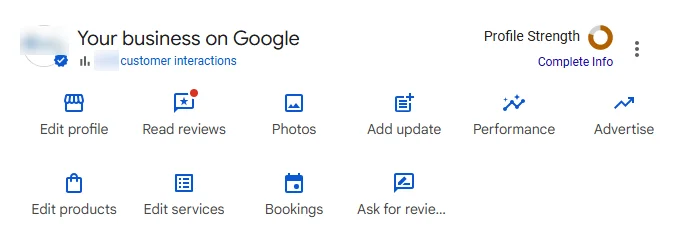Using transition words in your writing can help you enhance the readability of your content. These words help your text flow and show readers the relationship between phrases and paragraphs. That’s why the readability check in Yoast SEO provides feedback on your use of transition words. But what are they exactly? Why are they so important? And how should you use them?

Welcome to our 2nd most-read blog post of 2020! We’re sharing this blog post as part of our holiday calendar, which holds a new surprise every day. So make sure to check it out!
Did you get a red or orange bullet for your use of transition words? Jump to the section about the Yoast SEO transition words check. Or go straight to learning how you can improve your use of transition words.
What are transition words?
Transition words are words like ‘and’, ‘but’, ‘so’ and ‘because’. They show your reader the relationship between phrases, sentences, or even paragraphs. When you use them, you make it easier for your readers to understand how your thoughts and ideas are connected. What is more, they prepare your reader for what’s coming.
Let’s consider an example.
I pushed the domino. As a result, it fell over.
When you start a sentence with ‘as a result’, your reader will immediately know two things:
- What happened in the first sentence caused something;
- The second sentence is going to describe the effect.
By using the phrase ‘as a result’ here, you show that the two separate sentences are part of one process. Without having even read the rest of the sentence, your reader can already guess what’s coming. In a way, transition words are the glue that holds your text together. Without them, your text is a collection of sentences. With them, the individual parts come together to form one whole.
Transition words don’t always have to be placed at the beginning of a sentence. Consider the following examples.
He’s a very nice guy. He took us out to dinner yesterday, for instance.
In this example, ‘for instance’ is placed at the end of the sentence. Nonetheless, it still provides the reader with information as to how the two sentences are related.
I enjoy his company because he always tells interesting stories.
In this example, ‘because’ doesn’t connect two sentences, but two clauses. Transition words can connect anything from short phrases to entire paragraphs.
Exploring transition words with an example
Let’s use a more concrete example. Below, you see Text A and Text B. Text A contains no transition words. On the surface, Text B is the exact same, only we’ve added transition words to make it easier to read.
Text A
I’m going to discuss a few reasons why practice is important to learning skills. The only way to truly master a skill is by actually doing what you’ll have to do in the real world. I think practice can be a fun way of putting in the necessary hours. There are some people who will disagree. It is said that people tend to remember only 10-20% of what they’ve heard or read. That number rises to as much as 90% when you put theory to practice. Following up explanation with practice is key to mastering a skill.Text B
In this paragraph, I’m going to discuss a few reasons why practice is important to mastering skills. Firstly, the only way to truly learn a skill is by actually doing what you’ll have to do in the real world. Secondly, I think practice can be a fun way of putting in the necessary hours. There are, However, some people who will disagree. Thirdly, and most importantly, it is said that people tend to remember only 10-20% of what they read or hear. Moreover, that number rises to as much as 90% when you put theory to practice. In conclusion, following up explanation with practice is key to mastering a skill.
Text A is not a terrible paragraph. However, the differences are clear as day. Text B does a better job of showing there are three separate arguments to support the statement with a definite conclusion. The reader never has to wonder whether a sentence still belongs to the previous argument or a new one. Moreover, it even shows the relationship between sentences within one argument. Therefore, people are going to find it easier to read this text and will stay on the page longer. And this is just one short, conveniently arranged paragraph!
Types of transition words
Transition words can be divided into several categories, based on the type of transition you want to make. There are often several words available for one transition. Sometimes they mean exactly the same, sometimes there are slight differences. If you’re not a native speaker or struggle with language in general, you’ll have to study and practice their use so that you can make better choices.
| Transition | Example word/phrase | Example sentence |
|---|---|---|
| Cause and effect | Therefore, as a result, so, consequently | I’m tired. Therefore, I’m going to bed. |
| Clarification | That is to say, in other words, to clarify | We’re letting you go. In other words, you’re fired. |
| Contrast | But, however, on the other hand | I am not fond of fruit. However, I do like bananas. |
| Example | For example, for instance | In the evening, I like to relax. For instance, I enjoy watching TV. |
| Emphasis | Above all, most importantly, certainly | There are many reasons to exercise regularly. Above all, it keeps you healthy. |
| Enumeration | Firstly/secondly, further, and, moreover, in addition | Today, I’m going to write a post. In addition, I’m recording some video lessons. |
| Time | Meanwhile, during, subsequently, after that | I’ll start by telling you what transition words are. After that, I’ll tell you why you should always use them. |
| Similarity | Likewise, similarly, in the same vein | She tried really hard to entertain her guests. Similarly, he put all his heart and soul in cooking a great dinner. |
| Summarize/conclude | In conclusion, to sum up, in short | In conclusion, transition words are an important aspect of SEO copywriting. |
Check out this article for transition words in other languages.
Why are they important for SEO?
Transition words make it easier to read and understand a text. And readability is very important for SEO. Although they don’t influence your SEO directly, they are one of the key factors to readability.
Transition words also play a crucial role in structuring your text. This leads to a better understanding of your text by your readers. A well-structured text helps to attract readers to your blog and contributes to SEO!
What does the transition words check in Yoast SEO do?
The transition words check in Yoast SEO assesses whether or not you use enough transition words. If at least 30% of the sentences in your text contain a transition word, the bullet will be green. You get an orange bullet if you use them in more then 20%, or in less than 30% of your sentences. The bullet will be red if less than 20% of the sentences of your text contain a transition word. That’s less than 1 in 5 sentences.
Want to read more on how we came to the exact measurements of the transition words check and of the other readability checks? Check out our article about the methodological choices of the readability analysis.
Want to find out which transition words Yoast SEO recognizes? Check out our article on transition words in your language.
How to improve your use of transition words
There are several potential problem areas when it comes to transition words. Let’s start with the good news: everyone uses them in some way. There are very few authors who never use the words ‘and’, ‘but’, ‘or’, and the like. Using them correctly or frequently enough, however, doesn’t come naturally to everyone. Using transition words successfully requires a couple of things. You have to:
- Know the transition words;
- Have a clear idea of the relationships between separate thoughts and ideas within your text;
- Know how to apply transition words properly and in context;
1. Know the words
Actually knowing the transition words is most commonly a problem for non-native speakers. However, many native speakers could also benefit from studying the less frequent ones. In any case, it is easy to do. You simply look up a list of transition words and study their definitions. Don’t underestimate it either, though! They are often quite nuanced and really depend on context.
2. Be aware of how your thoughts and ideas relate to each other
In the blog post assignments, people hand in for feedback in our SEO training courses, we see a clear pattern. People who have a better idea of the structure of their text also use more transition words and do it more effectively. Too often, people just start writing and then basically just see what happens. So what can you do?
Break your text down into an introduction, body, and conclusion, and make sure you know what goal every paragraph serves. Then, survey your text on a sentence level. Find opportunities to make transitions that make sense. If you struggle with this, try reading texts by other authors and see how they use transition words.
Conclusion
Transition words are very important for the readability of your text. However, many people struggle with them. If you do, study them and make sure you practice a lot. Our SEO Copywriting training can help you with that. In addition, make sure you’re aware of the structure of your text. In this way, it will be easier to pick the best transition words available.
Read more: How to use the readability analysis in Yoast SEO »
The post Transition words: why and how to use them appeared first on Yoast.



Recent Comments